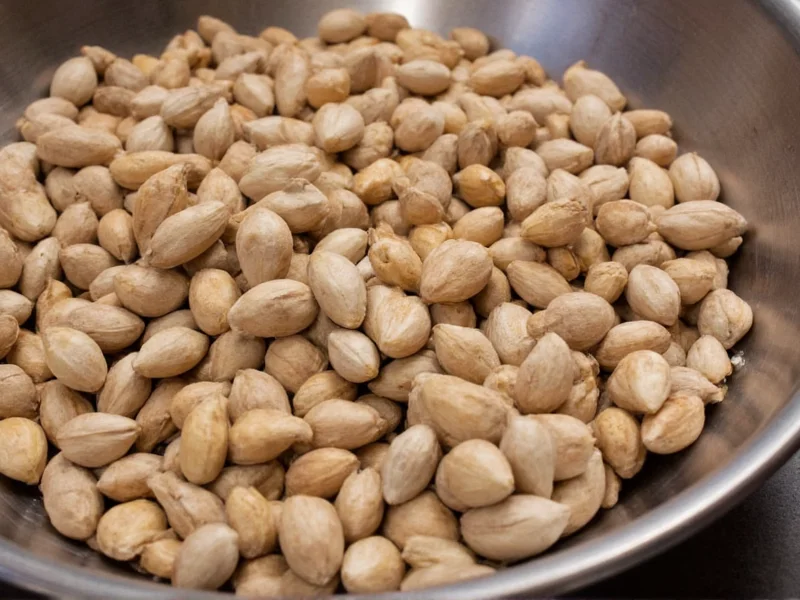Understanding the precise conversion between ground cardamom and cardamom pods is essential for achieving authentic flavor in your culinary creations. While the basic ratio provides a solid starting point, several factors influence the exact substitution needed for optimal results in your recipes.
Why Cardamom Conversion Isn't Perfectly Exact
The conversion ratio between ground cardamom to pods isn't mathematically precise due to natural variations in cardamom pods. Each green cardamom pod typically contains 7-10 seeds, but the exact number varies based on growing conditions and pod size. Additionally, the potency of cardamom diminishes over time, meaning older ground cardamom may require slightly more than fresh pods to achieve equivalent flavor.
Professional chefs and experienced home cooks understand that freshly grinding cardamom pods provides superior flavor compared to pre-ground spice. The essential oils responsible for cardamom's distinctive citrusy, floral notes begin evaporating immediately after grinding, which explains why many traditional recipes specify whole pods.
Factors Affecting Ground Cardamom to Pods Conversion
Several variables impact the accuracy of ground cardamom to pods substitution:
- Pod freshness - Newly harvested pods contain more volatile oils
- Seed count per pod - Can range from 5-12 seeds depending on variety
- Grinding method - Mortar and pestle versus spice grinder affects density
- Storage conditions - Ground cardamom loses potency 3-4 times faster than whole pods
- Recipe type - Baking versus savory dishes may require different potency levels
| Ground Cardamom | Equivalent Cardamom Pods | Best For |
|---|---|---|
| 1/4 teaspoon | 1-2 pods | Small batch baking, single servings|
| 1/2 teaspoon | 3-4 pods | Sauces, marinades, side dishes|
| 1 teaspoon | 6-7 pods | Main dishes, breads, larger recipes|
| 1 1/2 teaspoons | 10 pods | Traditional Indian/Middle Eastern curries|
| 2 teaspoons | 13-14 pods | Scandinavian baking, mulled beverages
When to Use Pods Versus Ground Cardamom
Certain recipes benefit significantly from using one form over the other. Understanding when to substitute ground cardamom for pods—or vice versa—can elevate your cooking.
Use whole pods when:
- Creating traditional Indian biryanis or pulaos (pods are often fried in oil first)
- Infusing flavors into liquids like chai, mulled wine, or broths
- Following Scandinavian baking traditions where pods are crushed with sugar
- Preparing dishes where visual presentation matters (pods can be removed before serving)
Use ground cardamom when:
- Making quick breads or cakes where even distribution is critical
- Creating spice blends like garam masala or speculaas spice
- Time constraints prevent proper grinding of whole pods
- Recipes specifically call for ground spice for texture reasons
Maximizing Flavor from Both Forms
To get the most flavor when converting ground cardamom to pods, follow these professional techniques:
When using whole pods: Lightly crush them with the back of a knife or in a mortar before removing seeds. This releases essential oils without making the seeds difficult to separate. For the most authentic flavor in Indian cuisine, temper cardamom pods in hot oil before adding other ingredients—a technique that significantly enhances flavor extraction.
When using ground cardamom: Store it in an airtight container away from light and heat. For best results when substituting ground cardamom for pods, bloom the spice in warm liquid or fat before incorporating into your recipe. This reactivates the essential oils that have diminished during storage.
Storage Considerations for Optimal Freshness
Proper storage dramatically affects how ground cardamom converts to pods in terms of potency. Whole cardamom pods maintain their flavor for 2-3 years when stored properly in airtight containers away from light and moisture. Ground cardamom, however, loses significant flavor within 6 months.
The shelf life difference explains why many professional chefs grind cardamom immediately before use. If you frequently convert ground cardamom to pods in your cooking, consider keeping whole pods on hand and grinding only what you need for each recipe. This practice ensures maximum flavor impact and more accurate substitution ratios.
Common Substitution Mistakes to Avoid
Many home cooks make critical errors when converting between ground cardamom and pods that compromise their dishes:
- Using the same volume measurement without accounting for density differences
- Not adjusting for the age of their spices (older ground cardamom needs more)
- Substituting black cardamom for green when the recipe specifies one variety
- Forgetting that pod husks contribute minimal flavor (only seeds matter for conversion)
- Using pre-ground cardamom in recipes designed for freshly ground pods
Remember that 10 cardamom pods to 1 1/2 teaspoons ground cardamom serves as your baseline conversion, but always trust your senses. If your cardamom smells faint, you'll need slightly more than the standard ratio when substituting ground cardamom for pods.
Traditional Preparation Methods Across Cuisines
Different culinary traditions approach cardamom preparation uniquely, which affects conversion ratios. In Middle Eastern coffee preparation, cardamom pods are often cracked and boiled whole, requiring more pods than when grinding for Scandinavian pastries.
Indian chefs typically remove cardamom pods after tempering, using approximately 4-5 pods per serving for biryani. Nordic bakers, however, grind pods with sugar to create a fine powder, where 6 pods typically equal 1 teaspoon ground. Understanding these cultural differences helps when converting ground cardamom to pods for authentic international dishes.











 浙公网安备
33010002000092号
浙公网安备
33010002000092号 浙B2-20120091-4
浙B2-20120091-4